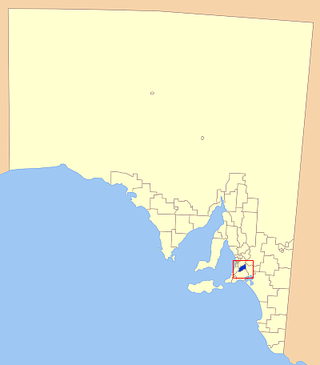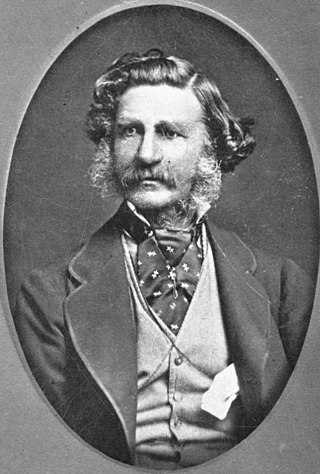
The Mount Barker District Council is a local government area, centred on the Adelaide hills town of Mount Barker, just outside the Adelaide metropolitan area in South Australia.

Eagle On The Hill is an unbounded locality in the Australian state of South Australia located in the suburb of Crafers West on the western face of the Adelaide Hills overlooking the Adelaide metropolitan area.

Victoria Park / Pakapakanthi, also known as Park 16, is a park located in the Southeastern Park Lands of the South Australian capital of Adelaide. It is bordered by Fullarton Road, Greenhill Road, East Terrace and Wakefield Road. Before 1897 it was known as the Old Adelaide Racecourse.
The Register, originally the South Australian Gazette and Colonial Register, and later South Australian Register, was South Australia's first newspaper. It was first published in London in June 1836, moved to Adelaide in 1837, and folded into The Advertiser almost a century later in February 1931.

Alexander Tolmer was a South Australian police officer and Police Commissioner. He was educated at Plymouth, Rouen, Maidstone and Hawkhurst. He migrated to South Australia in 1840 where he was made sub-inspector by Governor George Gawler.

Laggan is a small village on the traditional land of the Gundungurra people in the Southern Tablelands, New South Wales, Australia in Upper Lachlan Shire. At the 2016 census, Laggan had a population of 358.

The Royal Agricultural and Horticultural Society of South Australia was founded in November 1839 as the South Australian Agricultural Society with the aim of promoting primary industries in the Colony. The Society and its functions were patterned on similar organisations in England, and in its successive incarnations, the organisation has continued to pursue this aim to the current day.
The Adelaide Football Club, often referred to as the Old Adelaide Football Club, was an Australian rules football club based in Adelaide. Founded on 26 April 1860, it was the first football club formed in South Australia.
Edward John Peake was a winemaker, auctioneer, land agent, magistrate Member of Parliament and a prominent member of the Catholic Church in the early days of South Australia. born in Gloucestershire.
James and John Chambers were early settlers in the colony of South Australia, who left England in 1836, became wealthy pastoralists and were closely connected with John McDouall Stuart's expeditions across the continent of Australia.
A list of Royal Agricultural and Horticultural Society shows and other functions arranged chronologically:
J. & D. Shearer was an engineering and farm machinery manufacturer based in Mannum between 1882 and 1912, founded by John (1845–1932) and David Shearer (1850–1936), and continued separately as John Shearer & Sons of Kilkenny, South Australia, and David Shearer & Co. of Mannum.

Friedrich Edouard Heinrich Wulf Krichauff was a politician in colonial South Australia.

Charles Hill was an engraver, painter and arts educator in South Australia.
John Carruthers was a surveyor in South Australia, who fixed the boundary between the Northern Territory and Queensland.
Henry Jackson Moseley was a builder and publican in the very early days of the British colony of South Australia.
Francis Haire Bachelor of Arts, Trinity College, Dublin was a schoolmaster in the early days of Adelaide and the colony of South Australia. His Albert House Academy, the first Adelaide school of academic distinction, ran from 1850 to 1863.
St. John's is an Anglican church at the south-east corner of the City of Adelaide dating from 1841. The first building was demolished in 1886 and its replacement opened in 1887.
Henry Alford was a police trooper in colonial South Australia, the colony's first mounted constable. He left the force at a time of low morale and became a hotel owner and publican, in which pursuit he was followed by his two sons.
Lalla Rookh was a clipper/brig variously recorded as 184 tons and 147 tons, built in Peterhead, Aberdeenshire, Scotland in 1848. She was described as one of the "new Aberdeen clippers".








